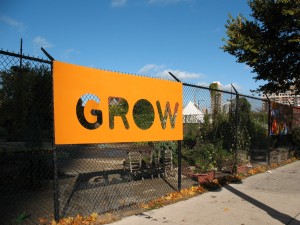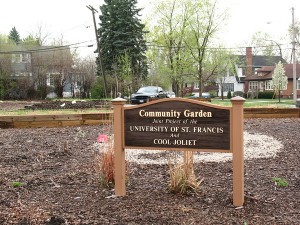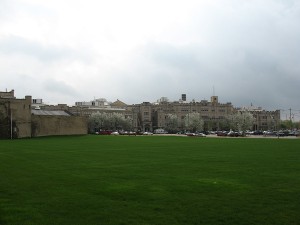I’ve met Doris Hamm only once, but she’s already one of my heroes. She’s started something here in Joliet that’s going to change the world, one school and one kid at a time.
Hamm is a teacher’s assistant at Joliet’s Hufford Junior High School in Darren Raichart’s “Life Skills” class for cognitively-challenged students. She is the architect of a truly extraordinary project: a vegetable garden in Hufford’s courtyard run by her Life Skills students, who have fun getting dirty and learning hands-on gardening techniques, food preparation and cooking skills, and practical lessons in science, math, and economics.
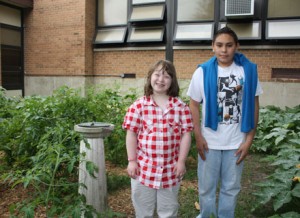
Hamm likens this sustainable experiential learning process to fishing. “It’s like the old Bible story goes,” she told me. “If you give someone a fish, you feed them for a day. If you teach them to fish, you feed them for a lifetime.”
Her students are eating it up. During my visit in the fall of 2009 to Hufford’s Life Skills classroom, the kids eagerly showed me pictures of their garden and told me about their experiences. Some struggled merely to say their names; but their enthusiasm for and knowledge about their garden was nothing short of phenomenal.
In the spring of 2009, the garden’s inaugural year, Hamm and her charges sowed $28 worth of vegetable seedlings. Their diverse array of crops included green beans, peas, tomatoes, broccoli, collard greens, cucumbers, peppers, onions, cabbage, and zucchini.
The kids tended their garden through the summer growing season by watering, pulling weeds, and harvesting food. Later, they used their vegetables in recipes and froze their excess bounty. When Thanksgiving, they cooked a feast made from the organic produce they grew, processed, and preserved themselves.
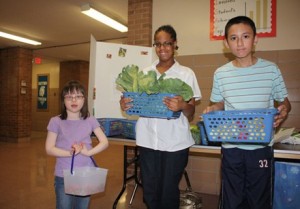
Most amazingly, the Life Skills students ran three farmer’s markets in the hallways of Hufford in the fall of 2009. Strategically timed for payday, the markets proved a huge hit among faculty and staff, and made over $300 collectively — a stunning 980% return on their initial investment. Green venture capitalists, take note!
This success has stoked great plans for coming years. Hamm and her student-gardeners hope to significantly expand their courtyard plot, dedicate part of their harvest to local charities, expand their farmer’s market operation, consider ways to supply the school cafeteria with fresh in-season vegetables, and include many more students in this incredible hands-on learning experience.
Based on what I’ve seen so far, I know they’ll make it happen. After all, they’re not just learning to plant seeds or pull weeds. They’re gardening for life.
This essay was originally published as an op-ed column in the Joliet Herald-News on 5 November 2009. The Hufford courtyard garden has expanded as of March 2012, and the children there are busy planning their 2012 planting and growing season.
The garden project now involves several groups of kids from this urban middle school of almost 1,100 students, including those in Hufford’s Independent Education magnet program as well as those with chronic behavior problems who are learning to work side-by-side with their peers in a peaceful and respectful manner and, in the process, forging friendships with their developmentally-disabled peers.
For more information about school gardens and improving school lunch programs, check out the Illinois Nutrition Education and Training Program.
